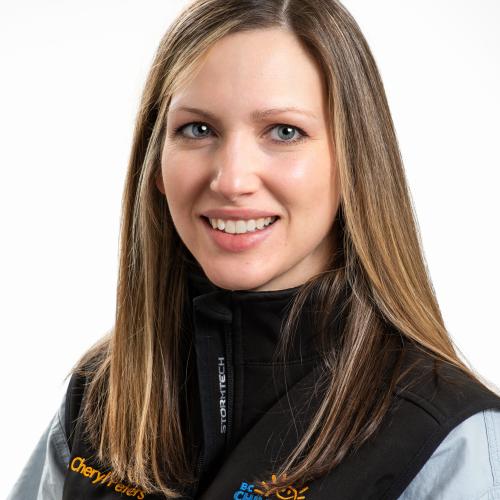- Overview
-
No child should die from airway mismanagement. The actual procedure of intubation involves placing a plastic breathing tube in the airway of a patient that provides a conduit for oxygenation and ventilation. As simple as this may sound, avoidable deaths have been documented in the literature. These events are often the result of a cascade of system failures related to equipment, environment, preparation, planning, experience and communication. Furthermore, there is little information known about best practices specifically related to patients who have difficult airways.
It is said that a picture is worth a thousand words. Our innovative project is an observational study that intends to capture a snapshot of the process of airway management across the hospital — including all out-of-OR intubations. The purpose of this study is to document events and processes circumferential to the procedure and identify areas for quality improvement and bench mark the outcomes with other hospitals world-wide.
We will collect data using an electronic research database with the goal to create an innovative database specific to BCCH as well as have the ability to collaborate both nationally and internationally with other centers that manage children who have difficult airways. This collaboration will have the potential to reduce airway management associated harm and save lives.
- Research
-
Safety of Airway Management in Children
One of my current passions is improving airway management of children at BC Children’s Hospital campus wide. There is unnecessary morbidity and mortality related to inappropriate airway management and I am the co-chair of a multidisciplinary committee aimed at quality improvement and safety at BCCH. My passion began after a sentinel event where a neonate died after there were multiple unsuccessful attempts at intubation. I reviewed the literature and gave grand rounds presentation to the department of Pediatric Anesthesiology with invited representatives from the Pediatric Intensive Care Unit and Neonatal Intensive Care Unit. Together we pledged to reduce airway management associated harm at BC Children’s Hospital. I have undertaken the lead of an 8 phase multidisciplinary hospital-wide project:
1. Multidisciplinary bi-monthly meetings
2. Data collection
3. Intubation Safety checklist
4. Difficult Airway Response Team (DART)
5. Standardization of Equipment
6. Simulation-based Multidisciplinary Airway Scenarios
7. Communication: Standardized Signage and Cerner based Airway Alert
8. Extubation Safety Checklist
We have successfully won the BCCHR 2016-2017 Evidence to Innovation Seed Grant Award and will use the funds to launch the Difficult Airway Database (via RedCap) at BC Children’s Hospital. In addition, we will contribute a portion of our data, as the first Canadian site, to the PEDI registry (an International Database aimed at improving the quality and safety of difficult airway management in children). Our hospital-wide multidisciplinary project is currently still ongoing with the goal completion date June 2018. We are working on a manuscript for publication upon completion of this project. We plan to expand our BC Children’s Difficult Airway Database across the nation of Canada to create a Collaborative Canadian Database. This collaboration will drive research that focuses on quality and safety to improve airway management of children and save lives.Sepsis in Children
There remains an unacceptably high morbidity and mortality in children who have sepsis. Among children, the current definition relies on the presence of systemic inflammatory response syndrome (SIRS) criteria and presumed or proven infection to diagnose sepsis. Recent reports have highlighted the poor specificity and predictive ability of these criteria for mortality and failure to identify one in eight adults with culture proven infection and organ failure. These limitations in the definition have led to an international change in sepsis definitions in adults (Sepsis-3). Currently, no studies have been conducted to evaluate the utility of the SIRS in identifying children who have infections and are at risk of increased mortality using a large multi-center dataset.
We are the first to examine the specificity and sensitivity of the SIRS criteria using a database of over 100,000 pediatric patients admitted to PICUs across Canada and the United States. Our abstract has been accepted to one of the largest Critical Care conferences in the world – the American Thoracic Society 2017 Conference in Washington, DC. Our manuscript is submitted and will be the first pediatric critical care article with this large of a dataset. Our goal is to continue with this work and propose new pediatric consensus sepsis definitions by collaborating internationally with pediatric sepsis experts from around the world. Our ultimate global goal is early identification of children with severe sepsis to ensure timely treatment and decrease morbidity and mortality while confidence in identification may lead to conservation of resources and decreased antimicrobial resistance by denying treatment to those without sepsis.GrantsCanadian Institutes of Health Research (CIHR), Difficult Airway Database, 03/2017- 03/2018, $14,875
Michael Smith Foundation, Can’t Intubate Can’t Oxygenate Kits, 02/2018-02/2019, $1,500
Honours & AwardsATS Abstract Scholarship, $500. 2017 ATS International Conference, Washington, DC
Research Group MembersFlora Su, Research Assistant
Researching mental health and substance use: Q&A with new investigator Dr. Trevor Goodyear
Dr. Trevor Goodyear's interest in working with youth stems from several years as a registered nurse in Ontario and BC, including in child and adolescent mental health at BC Children's Hospital. He joined BCCHR as an investigator in October 2025.





